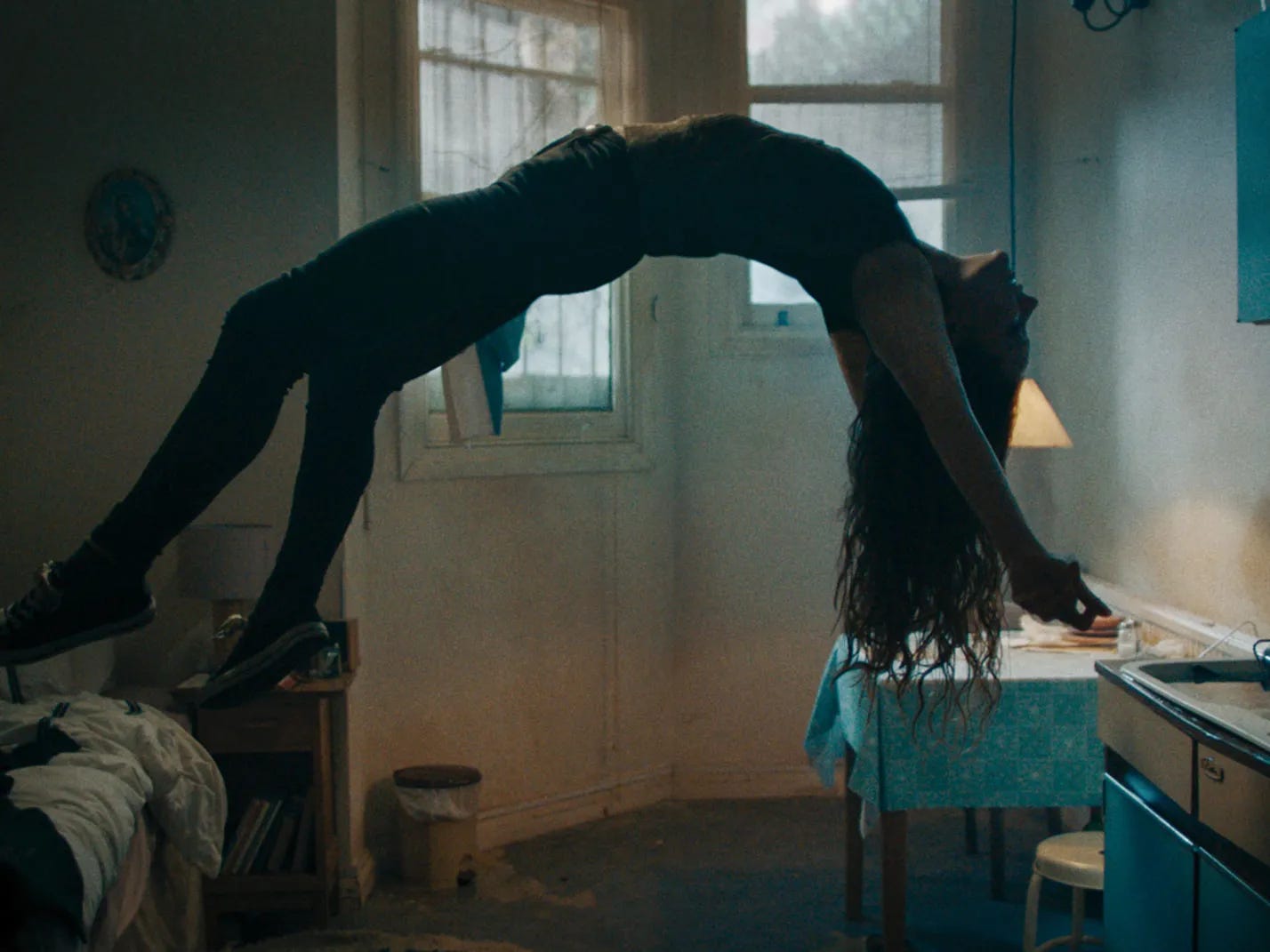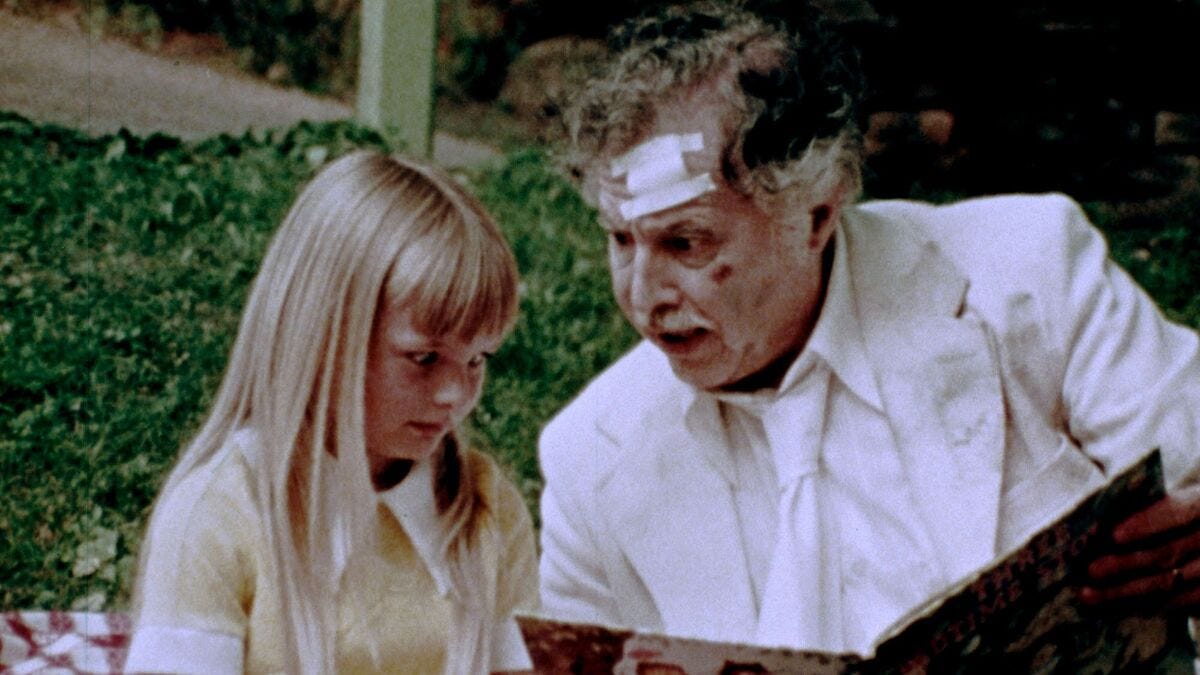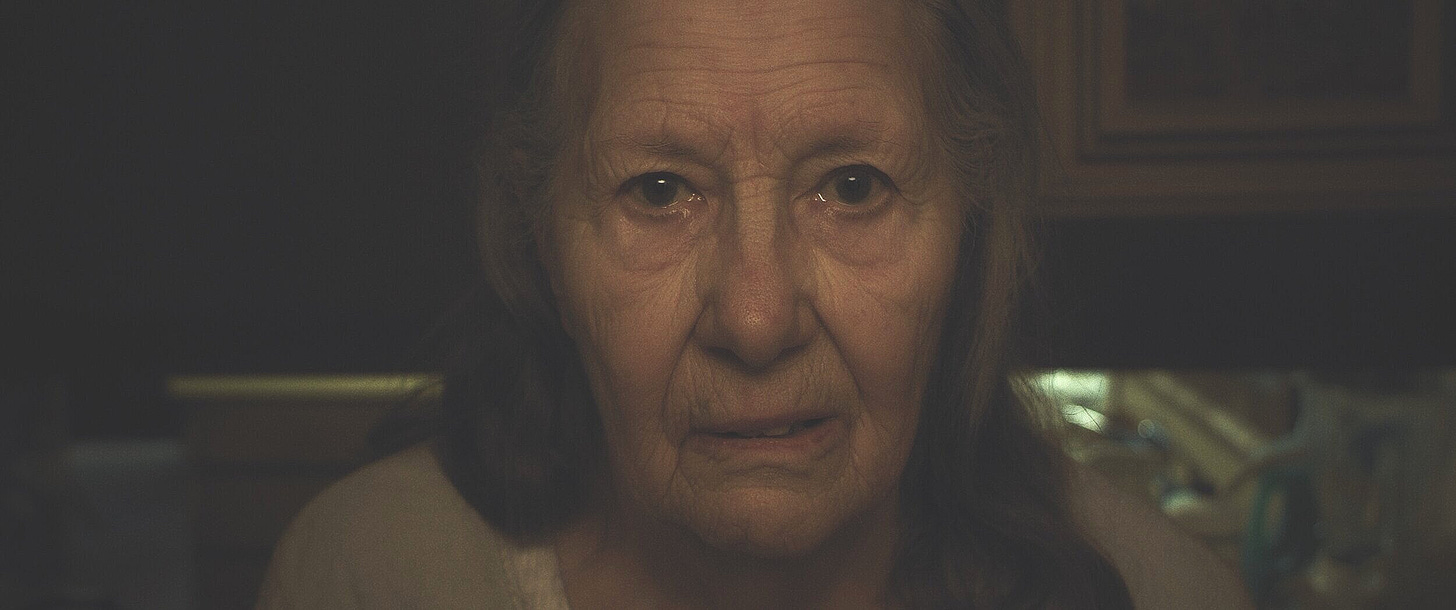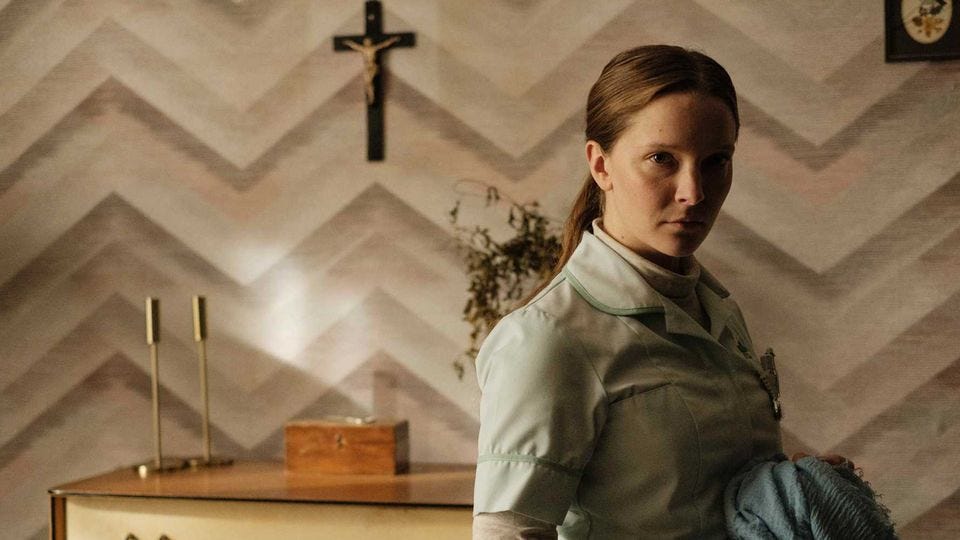The Top Five Horror Films of 2021 (* According to Metacritic, According to Me)
Catching up with the most critically acclaimed shockers of last year.
Back in October, shortly after we started The Reveal, I confessed to having seen only one of the films (Summer of Soul) that the review aggregation site Metacritic listed among 2021’s Top 10 as of that date. I apologized profusely for being a poor cinephile and set about watching the remaining nine for a two-part feature. (For what it’s worth, two of the films ultimately made my Top 15 list, though both were out of the Top 10, with Tsai Ming-liang’s Days at #11 and Jasmila Žbanić’s Quo Vadis, Aida? At #13. What can I say? It was a more back-loaded year than usual.)
In that spirit, I wondered why so few horror films had popped up on my colleagues’ best-of lists. Horror has traditionally (and unfairly) had trouble getting much respect from critics, but there’s usually one or two films we rally behind — like The Babadook, Hereditary, or The Witch, to name the three examples of “elevated” horror cited by the teenager at the beginning of the new Scream movie. Genre fans, myself included, tend to bristle at the term “elevated,” mainly because it implies that horror is inherently low cinema that must be redeemed from the ugly business of simply scaring an audience.
The Reveal is a reader-supported newsletter dedicated to bringing you great essays, reviews and conversation about movies (and a little TV). While both free and paid subscriptions are available, please consider a paid subscription to support our long-term sustainability.
So I looked at Metacritic's five top-rated horror films of 2021. Of the five films on this list, ranked by Metacritic score, only the consensus choice for #1, Saint Maud, snuck onto a smattering of Top 10’s. And yet all of them would fall under the “elevated” banner, either for their social messaging or their audacious experiments in style. It makes sense that critics would crave nourishment beyond simply being scared out of their wits, though there’s also a swath of my colleagues who would never endorse a piece of visceral nastiness for its own sake, no matter how skillfully rendered. But from my perspective, the truly great horror films are a complete shock to the system, at once thoughtful and unsettling. And the best-of-the-best in this Top Five meet that criteria.
(Note: I disqualified one of the films that would have made this list, Claudia Llosa’s Fever Dream, because it was too much of a stretch to call it a horror film, despite the presence of a child whose behavior edges into the demonic. Genre boundaries can get a little blurry, but I’d classify it more as a dreamlike drama. It can be watched on Netflix.)
5. Candyman (dir. Nia DaCosta)
Metacritic score: 72
Where to watch: Digital rental/purchase on the usual platforms.
Elevation level: The glass overlook at Willis Tower (formerly Sears Tower).
Scaredy-cat preparedness level: Minor precautions.
Rating: Three stars (out of five).
Premise: Over four decades after a hook-handed Black man was gunned down by police in the Cabrini-Green housing project in Chicago, giving rise to the urban legend of the murderous Candyman, artist Anthony McCoy (Yahya Abdul-Mateen II) starts poking around the history of this now-gentrified area. When his resultant gallery opening creates a buzz, people start daring themselves to say “Candyman” in the mirror five times, which leads to the killer’s grisly revival.
Thoughts: The real-life gentrification of River North, the neighborhood that once hosted Cabrini-Green, makes this sequel to/reboot of the 1992 Candyman a tantalizing proposition, with a fittingly toothy premise about summoning a city’s racial ghosts. The early scenes are especially promising in the way they thread elements from the original film into the Black Lives Matter era, connecting the Candyman character to various incidents of oppression and police violence against the Black community. (The art exhibit is titled “Say My Name,” in case such associations are lost on anyone.) But where ’92 Candyman rendered its politics as subtext to an effectively nerve-jangling horror film, DaCosta does the reverse, drifting away from a lot of sequences that never follow through on the set-up. It’s like the film closes its eyes in fear before the audience ever does.
4. Lucky (dir. Natasha Kermani)
Metacritic score: 75
Where to watch: Shudder.
Elevation level: Roadside lookout area in the Smokies.
Scaredy-cat preparedness level: Microwave popcorn.
Rating: Two stars (out of five).
Premise: With her career as a self-help book writer already on the wane, May (Brea Grant, who also scripted) faces another, more existential threat when the same masked man keeps attacking her every day. This desperate situation gets more surreal when her husband, colleagues, friends, and police treat the attacks with total nonchalance.
Thoughts: Fine short, bad movie. The first time May wakes up her husband to alert him of the Michael Myers-like figure standing in their lawn with murderous intent, his reaction (i.e. “oh that’s just the guy who tries to kill us every night”) has a deadpan potency. The many subsequent attacks have diminishing returns. Lucky is upfront in its #MeToo themes, turning May’s frightening and infuriating ordeal into a statement on how violence against women is treated with minimal concern, if not disbelief. Yet the attacks themselves are staged with so little panache that May’s accumulating trauma feels more like a grinding monotonousness. Distressingly little of this film goes a long way.
3. The Amusement Park (dir. George A. Romero)
Metacritic score: 77
Where to watch: Shudder.
Elevation level: The top of an old wooden coaster.
Scaredy-cat preparedness level: Ken Burns.
Rating: Three-and-a-half stars (out of five)
Premise: In this rediscovered and restored Romero film from 1975, Lincoln Maazel plays an old man stuck in a nightmarish amusement park that serves as a metaphor for how society treats the elderly. How do we know it’s a metaphor? Maazel says so straight to the camera in the documentary-like scenes that bookend the film.
Thoughts: Romero directed this hour-long feature on a song in 1973. It didn’t premiere until 1975 and was considered lost until getting rediscovered in 2017 and cleaned up for this reissue. Maazel would later star in Romero’s 1977 classic Martin, and he’s an appealingly pitiable presence in this film, which could be understood as a genre twist on Umberto D. With a documentary-like flatness, The Amusement Park satirizes a system where government benefits can be likened to a ticket line and the attractions come with so many restrictions and hassles that they’re not worth trying to ride. (The bumper cars alone are a legal miasma.) Though few have Romero’s dexterity for infusing horror with social commentary, here he’s not interested in scaring the audience so much as creating an experience that feels like dementia, with the cheery ambience of carnival organs turning into a hostile soundtrack of disorientation.
2. Sator (dir. Jordan Graham)
Metacritic score: 82
Where to watch: Amazon Prime, Shudder, and the usual rental platforms.
Elevation level: A rainswept cliff over craggy rocks.
Scaredy-cat preparedness level: Keep the covers ready.
Rating: Three-and-a-half stars (out of five).
Premise: A demented old woman rambles occasionally about a supernatural forest entity called Sator, which among other things guides her hand to write. But most of the action focuses on her grandson Adam (Gabriel Nicholson), who lives in a cabin in the woods and monitors a “deer cam” that’s good at capturing disturbances more sinister than Bambi.
Thoughts: Graham did every job in this impressive DIY debut, including casting his own grandmother as the old woman and building the film around her ramblings. Sator unfolds in an elliptical jitter, with a lot of mumbled dialogue and a dense family history that’s as difficult to unpack as it is slow to materialize. Yet Graham’s intense atmosphere and vividly muddy imagery have a destabilizing effect, even before you have any inkling about what’s actually going on. When the entity finally makes itself known and Sator breaks out the shocks, it has a lost-in-the-woods quality that’s like a less tangible, more experimental The Blair Witch Project. Someone needs to cut Graham a decent check for the next one.
1. Saint Maud (dir. Rose Glass)
Metacritic score: 83
Where to watch: Hulu, Paramount+, and the usual rental platforms.
Elevation level: The nuns in Black Narcissus.
Scaredy-cat preparedness level: Maybe sit this one out.
Rating: Four stars (out of five)
Premise: Once a hospital nurse who lost her job under mysterious circumstances, Maud (Morfydd Clark) is now a pious Catholic who takes a live-in job with Amanda (Jennifer Ehle), a chain-smoking former dancer and choreographer who’s terminally ill. With Amanda approaching her last days, Maud decides to make a project of her patient’s salvation, but it’s unclear whether Amanda even wants to be saved — or if Maud is equipped to do it.
Thoughts: In true A24 fashion, Saint Maud doesn’t feel much like a horror film in the early-going, as Glass carefully establishes the odd-couple relationship between the worldly, artistically minded Amanda and the seemingly simple Maud, whose life has been reduced to ascetic routine. But like anyone approaching death, Amanda fears the hereafter, and Maud thirsts for an opportunity to lead her to the light, in part because she’s also searching for holy redemption. Though vaguely disquieting from the start, the film turns on signs of Maud’s mental distress, and it keeps on turning until Glass uncorks a series of chilling sequences that emphasize the disconnect between fantasy and reality. One moment had me jumping straight out of my chair — you’ll know it when you see it — but the film is exceptionally controlled from the start, right down to an ending that encapsulates its themes to startling effect.










Oh man, this is a cool idea for a feature. I'm an obscenely big nerd about horror and I have two pretty solid 'maybe-under-the-radar' recs for ya Scott:
- The Medium by Banjong Pisanthanakun - holy hell, this legit works as found footage elevated horror and the ending is devastating. Easily the best horror movie I saw all year. (I'd put Saint Maud up there too.)
- Wrong Turn by Mike P. Nelson - I've never given a shit about this long-running garbage-ass series, maybe the worst 'has many sequels' horror franchise in the game, but this reboot does a great job of squinting at the premise, saying "oh wait, how about we do it this way" and having a lot of fun with it. If this was a straight up new horror movie w/out the Wrong Turn baggage, I think it'd have gotten a lot more attention. It's ain't elevated at ALL but it sure does work. It even made me enjoy Matthew Modine!
I love your Elevation Levels, even if they don't help evaluate the movies at all ;)